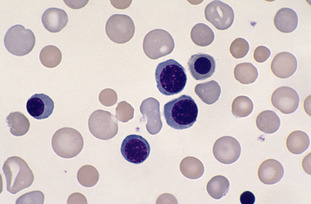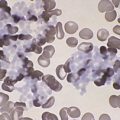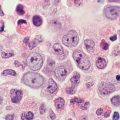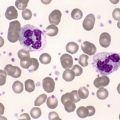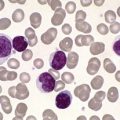A1. Erythropoiesis
Normoblastic Erythropoiesis
Normal erythropoiesis is characterised by the following progressive changes:
(a) Reduction in cell size
(b) Maturing of the cytoplasm: as the cytoplasm gradually acquires haemoglobin it changes from a basophilic to an eosinophilic colour. This change is accompanied by a gradual loss of RNA
(c) Maturing of the nucleus: the chromatin strands gradually become condensed and pyknotic; nucleoli are lost and the nucleus is finally extruded at the orthochromatic stage while the cell is still within the bone marrow. The resulting polychromatic red cell or reticulocyte still contains some RNA, which, after a period of 1–2 days, completely disappears and a fully haemoglobinised mature red cell or erythrocyte results.
These cell characteristics are seen in fixed preparations stained with a Romanowsky stain.
Proerythroblast
The proerythroblast varies from 12 to 20 μm in diameter and has a large nucleus that occupies most of the cell. The chromatin strands are fine, giving an even reticular appearance. Nucleoli are present. The cytoplasm is intensely basophilic—much more so than is seen in blast cells of the white cell series. Refer to Fig A1-1.
Basophilic erythroblast
The basophilic erythroblast varies from 10 to 16 μm in diameter. The nucleus is still relatively large and the chromatin strands are thick, giving a coarse appearance; there are no nucleoli present. The cytoplasm is still very basophilic. Refer to Fig A1-2.
Polychromatic erythroblast
The polychromatic erythroblast varies from 8 to 14 μm in diameter. The nucleus is smaller and the chromatin strands more dense, tending to form clumps giving a characteristic cartwheel-shaped appearance. The cytoplasm is no longer basophilic but polychromatic or mauve coloured as it has begun to acquire haemoglobin. Refer to Fig A1-3.
Stay updated, free articles. Join our Telegram channel

Full access? Get Clinical Tree



